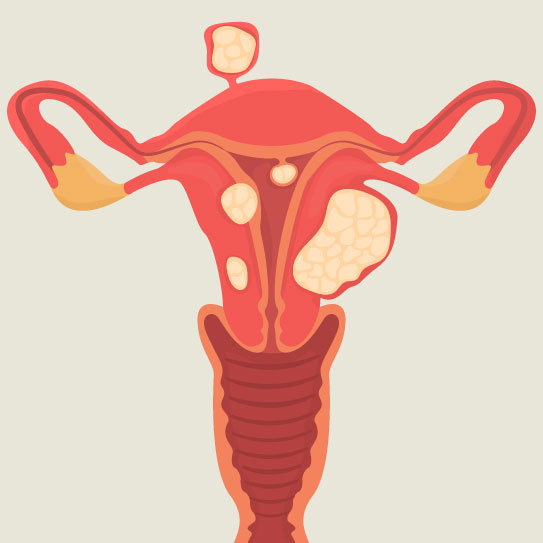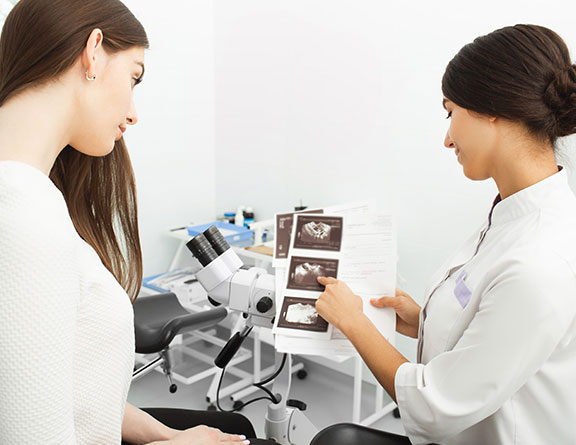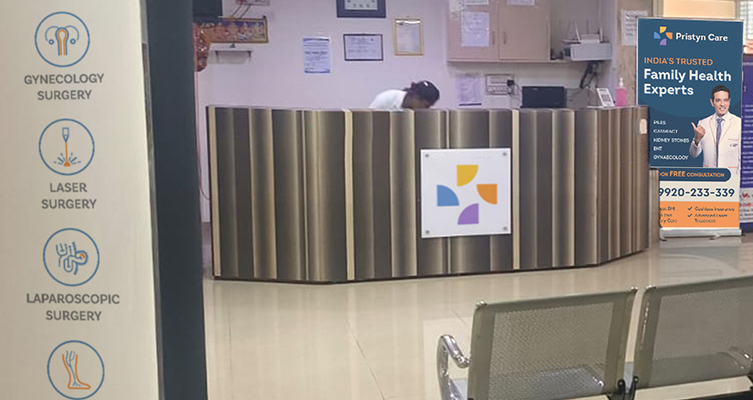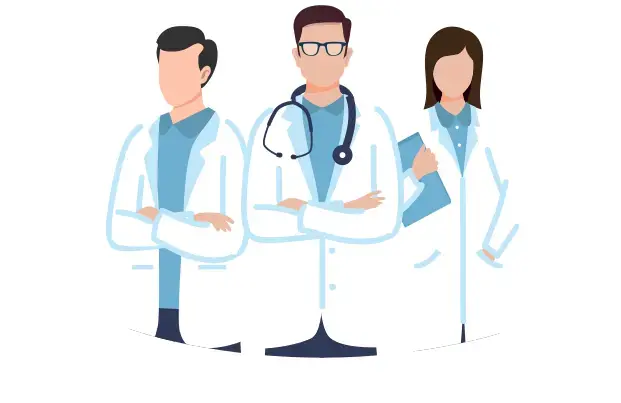What are the Causes of Uterine Fibroids?
While the exact cause of uterine fibroids is still not fully known, several factors are believed to influence their development. These include:
Oestrogen and progesterone—two key hormones involved in the menstrual cycle play an important role. These hormones help the uterine lining regenerate during each cycle and may also stimulate fibroid growth. Fibroids often increase in size during pregnancy when hormone levels are high and tend to shrink after menopause when hormone levels naturally drop.
Genetics can influence your likelihood of developing fibroids. If your mother, sister, or close female relatives have had fibroids, you may be more likely to experience them too.
Being overweight or obese may raise the risk of fibroids. This is because fat cells produce additional oestrogen, which can promote fibroid growth. Maintaining a healthy weight may help reduce the risk or slow the growth of fibroids.
Early Onset of Menstruation
Starting your period at an earlier age has been associated with a slightly higher chance of developing fibroids later in life. This may be due to longer lifetime exposure to oestrogen.
A diet high in red meat and low in green vegetables, fruit, and dairy may be linked to a greater risk of fibroids. Additionally, lack of regular physical activity may also contribute, although the connection is still being studied.
Factors such as stress, hormonal contraceptive use, and certain environmental exposures may also play a role in fibroid development, though more research is needed in these areas.
Types of Uterine Fibroids
Fibroids can develop in different parts of the uterus and are classified based on their location. Here are the main types of fibroids:
These are the most common type and grow within the muscular wall of the uterus. As they increase in size, they may stretch the womb and cause symptoms such as heavy menstrual bleeding, pelvic pressure, or lower back pain.
These develop just beneath the inner lining (endometrium) of the uterus and can protrude into the uterine cavity. Even small submucosal fibroids can cause significant symptoms, including very heavy or prolonged periods, and may also interfere with fertility or increase the risk of miscarriage.
These fibroids grow on the outer wall of the uterus and may extend outward into the surrounding pelvic cavity. Depending on their size and position, they may press on nearby organs like the bladder or bowel, leading to symptoms such as frequent urination, bloating, or constipation.
This type grows on a stalk-like structure that attaches it to the uterus, either inside or outside the uterine wall. If the stalk becomes twisted, it can cause sharp, sudden pain that may require prompt medical attention. Pedunculated fibroids may also contribute to discomfort during physical activity or intercourse.
Are Fibroids Very Common?
Yes, fibroids are quite common, especially among women of reproductive age. In many cases, women may have fibroids without any noticeable symptoms. When symptoms do occur, they can vary from mild to more troublesome, affecting daily comfort and wellbeing.
If you are experiencing discomfort, heavy periods, or any symptoms that are affecting your quality of life, it is always best to consult a specialist. At Pristyn Care, we are here to provide safe, personalised care to help you manage your health with confidence and comfort.
Understanding Uterine Fibroid Sizes
At Pristyn Care, we believe that every woman deserves clarity and confidence when it comes to her health. Uterine fibroids are more common than many realise, and while they are non-cancerous, their size plays an important role in the type of symptoms experienced and the treatment approach we recommend.
How to Measure Fibroids?
At Pristyn Care, we use advanced diagnostic tools such as ultrasound and MRI scans to precisely measure fibroids in millimetres or centimetres.
Types of Fibroid Sizes and What They Mean
- Small Fibroids
- Size: Less than 2 cm
- Symptoms: Often silent with minimal or no symptoms
- Medium Fibroids
- Size: Between 2–5 cm
- Symptoms: May cause menstrual irregularities, pelvic pressure, or discomfort
- Large Fibroids
- Size: Over 5 cm (can grow up to the size of a grapefruit or larger)
- Symptoms: Can lead to heavy bleeding, pelvic pain, frequent urination, bloating, or infertility
Why Size Isn’t the Only Factor?
At Pristyn Care, we don’t just focus on size—we look at the complete picture. A small fibroid inside the uterine lining (submucosal) can be more disruptive than a larger fibroid on the outer surface (subserosal). That is why our gynaecologists conduct a comprehensive evaluation to recommend what is truly best for your health and comfort.
When to Consult a Specialist?
If you are noticing heavy or prolonged periods, pelvic pressure, or unexplained lower abdominal discomfort, it is time to book a consultation. Our team of experienced gynaecologists at Pristyn Care ensures personalised care, cutting-edge treatment, and complete support every step of the way.
At Pristyn Care, we prioritise your well-being with precision diagnostics and world-class gynaecological care. No matter the size or type of fibroid, we are here to help you live confidently and comfortably.
Can uterine fibroids rupture or burst?
In rare cases, uterine fibroids can rupture which may result in internal bleeding and abdominal pain. A few factors that may increase the chances of fibroids rupture, such as extensive pressure on blood vessels in the fibroids, increased blood pressure, abdominal pressure, a twisted fibroid, or abdominal trauma. The uterus can become bulky due to the occurrence of enlarged or multiple uterine fibroids. At times, when uterine fibroids are larger than usual, they add on the weight resulting in a deformed uterus causing heaviness.
Are uterine fibroids and cysts the same?
No. Uterine fibroids and cysts are two different conditions. Uterine fibroids generally develop from the muscle layer of the uterus, are non-cancerous tissue growths, asymptomatic in the early stage. Whereas, on the other hand, cysts usually develop in or on the ovaries and are usually benign, fluid-filled.
Do all uterine fibroids need treatment?
In some cases, uterine fibroids are too small to cause any significant symptoms and thus do not bother in day-to-day life. However, if you are experiencing any sign or symptoms like pain in pelvic region, heaviness, constant fatigue, or irregular periods you should look for medical advice to prevent the condition from getting severe.
Can uterine fibroids affect pregnancy?
Yes. Uterine fibroids can affect pregnancy. At times, if the uterine fibroids are severe, it can escalate the chances of miscarriage or premature childbirth. It is always a better option to consult a gynecologist at Pristyn Care in Bangalore for a thorough diagnosis along with the best-suited treatment for uterine fibroids.










.svg)









